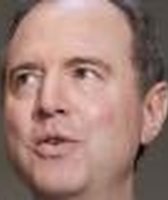Stand up for the facts!
Our only agenda is to publish the truth so you can be an informed participant in democracy.
We need your help.
I would like to contribute
There are few things Donald Trump loved more during his presidential campaign than proving the experts wrong. His next target: economists.
Specifically, Trump wants to demonstrate that there’s no reason why the United States can’t consistently grow at 3 percent a year.
This assumption underpins his budget, and his budget director leaned heavily on it during the May 23 unveiling of Trump’s budget proposal.
"Everything that we do in this administration, every single time I am called into the Oval Office, whether it's on immigration policy, health care policy, tax reform policy, trade policy, budgets and spending, the focus is sustained 3 percent economic growth," Trump’s budget director, Mick Mulvaney, said. "We have been attacked, stunningly, by some folks on the left, and even in the mainstream, who say that that's not a reasonable assumption."
The critics are wrong, Mulvaney asserted.
Sign up for PolitiFact texts
"We should stop and think how absurd that is to think that 3 percent growth in an American economy is, to some people, an absurd assumption," he said. "It used to be normal. Ten years ago, it was normal. In fact, it's been normal for the history of the country."
Mulvaney has a point about the historical record. Between 1948 and 2005, annual growth in gross domestic product hit that 3 percent benchmark 37 times, or two-thirds of the time in 57 years.
In the 11 years since 2005, however, the economy has never had an annual growth rate above 2.7 percent. That includes a portion of President George W. Bush’s tenure and all of President Barack Obama’s. (See the full chart below.)
So do economists really think that 3 percent growth is no longer feasible? Basically, yes.
Here’s why.
We checked in with several economists on the left, right and center. The most bullish among them were merely skeptical about the chances of reaching 3 percent on a consistent basis. The majority were downright pessimistic.
While it’s possible for the economy to hit the 3 percent target sporadically, that’s not the same as hitting it for multiyear periods in the 1980s and 1990s, said Dan Mitchell, a senior fellow at the libertarian Cato Institute.
(For the record, Trump actually promised 4 percent GDP growth during the campaign. We're tracking that promise on our Trump-O-Meter.)
One big hindrance: the working-age population isn’t growing as fast as it used to -- and that’s something largely out of the reach of policymakers.
"In prior decades, that growth was as high as 1.5 percent a year when the Baby Boom generation was coming of working age and women were entering the labor market in large numbers. Going forward, the Baby Boomers will retire, and that growth is projected to be only 0.3 percent to 0.4 percent," said Barry Bosworth, a senior fellow in economics at the Brookings Institution.
Chris Lafakis, a senior economist at Moody’s, added that a growing tendency toward curbing immigration will only bolster the existing demographic pattern.
Current immigration rates and the trajectory of immigration policy, he said, make it "unlikely that we will get an acceleration in labor force growth. This means that to hit 3 percent GDP growth and sustain it, we will need a marked increase in the rate of productivity growth" -- the second piece of the economic growth puzzle.
The problem with productivity growth, Lafakis said, is that it "isn’t something that you can just gin up."
"You can create bubbles to prop up GDP growth for a few years, such as the 2005 to 2008 housing bubble, but to boost productivity growth materially and durably, you need to make important changes over long numbers of years. You also need transformative technological innovation, which is not predictable."
If anything, said Lawrence White, a professor at New York University’s Stern School of Business, "productivity improvements appear to be slowing down." White said a target of 3 percent growth would require greatly accelerated productivity, "but it is far from clear where this acceleration would come from."
Trump’s policies are also not necessarily the obvious ones for driving the economy back to 3 percent annual growth.
On the right end of the ideological spectrum, Mitchell said that while he appreciates Trump’s instincts on lowering taxes and reducing regulations, the president’s "anti-trade agenda is bad for growth, and he's missing in action on controlling spending."
On the left, Christian Weller, a public policy professor at the University of Massachusetts-Boston, argued that’s what’s needed is higher spending on infrastructure, greater corporate investment rather than profit-taking, and greater consumption by an expanding middle class.
The Trump administration is not taking up these issues, he said, and "Congress right now is equally pushing in the wrong direction," such as by seeking to roll back Dodd Frank financial reforms and seeking to pass a regressive tax overhaul.
Tara Sinclair, a George Washington University economist, said that higher economic growth "is theoretically possible, but would almost certainly require some substantial policy changes, which aren't currently in the cards."
That said, it’s unwise to rule out the chance that something unexpected could happen.
"A 3 percent-growth forecast is nonsense, with one very important qualification: Economists have no clue what future productivity growth will be," said Dean Baker, a liberal economist. "No one saw the downturn in 1973, and it was not recognized as lasting for almost a decade afterward.
"The 1995 upturn also caught most economists by complete surprise. So, it is entirely possible that productivity will increase for reasons that have nothing to do with tax cuts. I would not predict this, but I’m just saying, it could happen."
Our Sources
Mick Mulvaney, remarks in releasing the president’s budget proposal, May 23, 2017
Email interview with Barry Bosworth, a senior fellow in economics at the Brookings Institution
Email interview with Dan Mitchell, senior fellow at the Cato Institute, May 25, 2017
Email interview with Dean Baker, co-director of the Center for Economic Policy and Research, May 25, 2017
Email interview with Christian Weller, public policy professor at the University of Massachusetts-Boston, May 25, 2017
Email interview with Tara Sinclair, George Washington University economist, May 25, 2017
Email interview with Lawrence White, professor at New York University’s Stern School of Business, May 25, 2017
Email interview with Chris Lafakis, senior economist at Moody’s, May 25, 2017


















































